From ancient Greek mythology to 19th-century art to today’s scientific analysis of anthocyanins, the breadth of Iris topics may surprise you. Here are 10 facts that we hope round out your view of these fascinating plants.

Iris is the word for “rainbow” in Greek and designates the Greek goddess of the rainbow. The many colors of Iris flowers are likely the reason behind the plant’s name. This can also be said of the colored portion of the eye, which is called the iris.
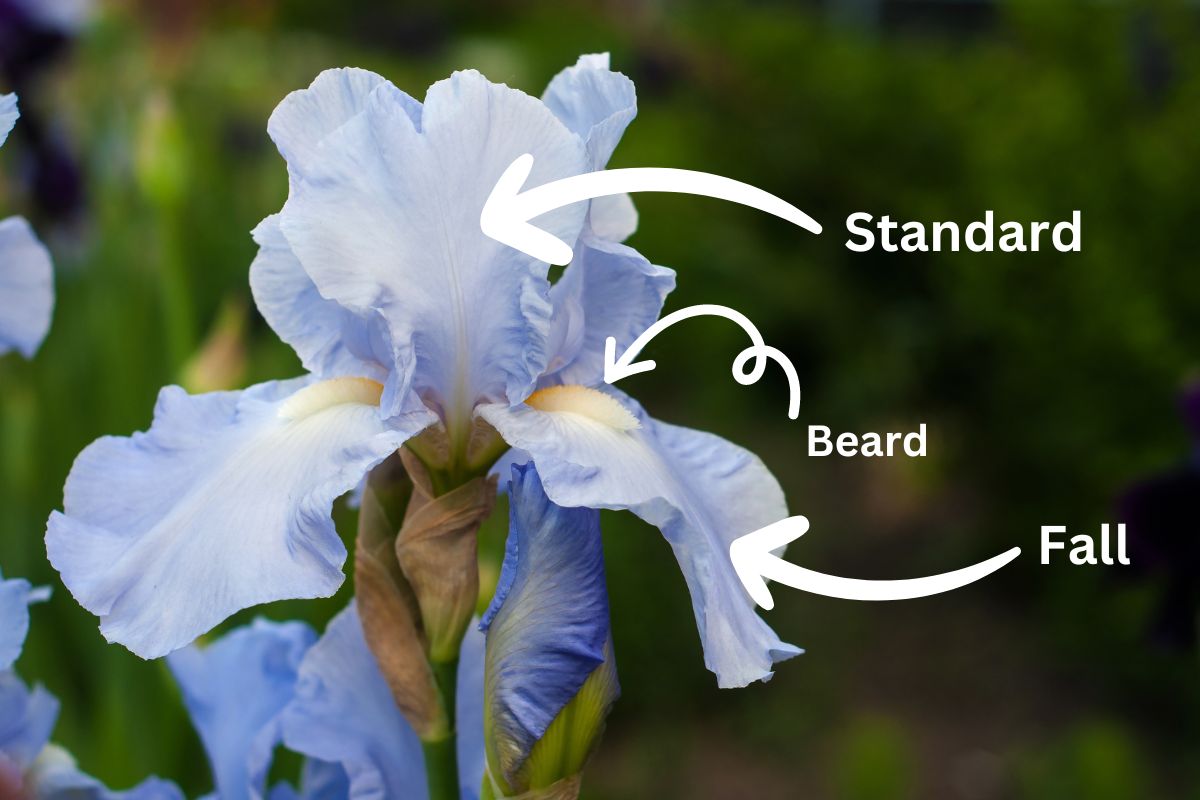
Each Bearded Iris flower has 3 petals (standards) and 3 sepals (falls). In some flowers, the color of the standards and falls is the same. In others, the colors are different with variations ranging from subtle tonal shifts to boldly contrasting hues.
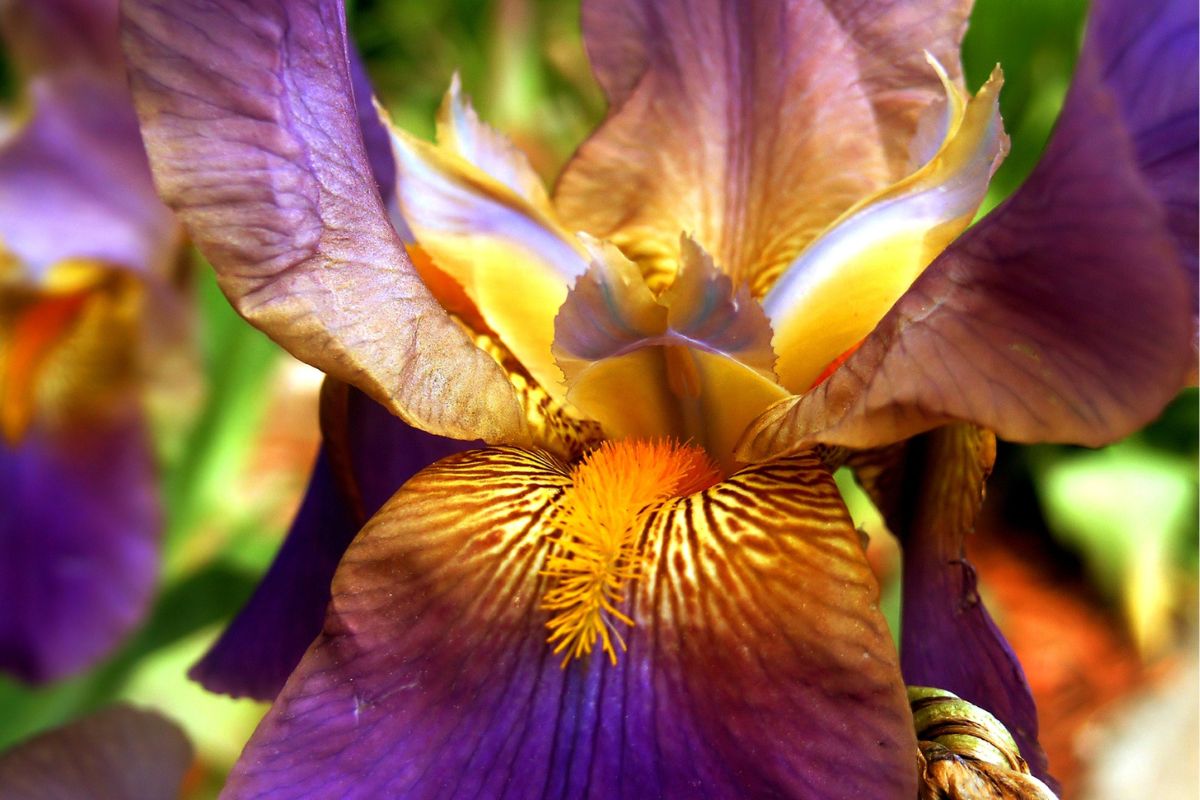
The “beard” of Bearded Iris comprises fuzzy hairs in a band that lies at the upper middle of each fall. The purpose of the beard is to direct pollinators to the nectar and pollen at the center of the flower.
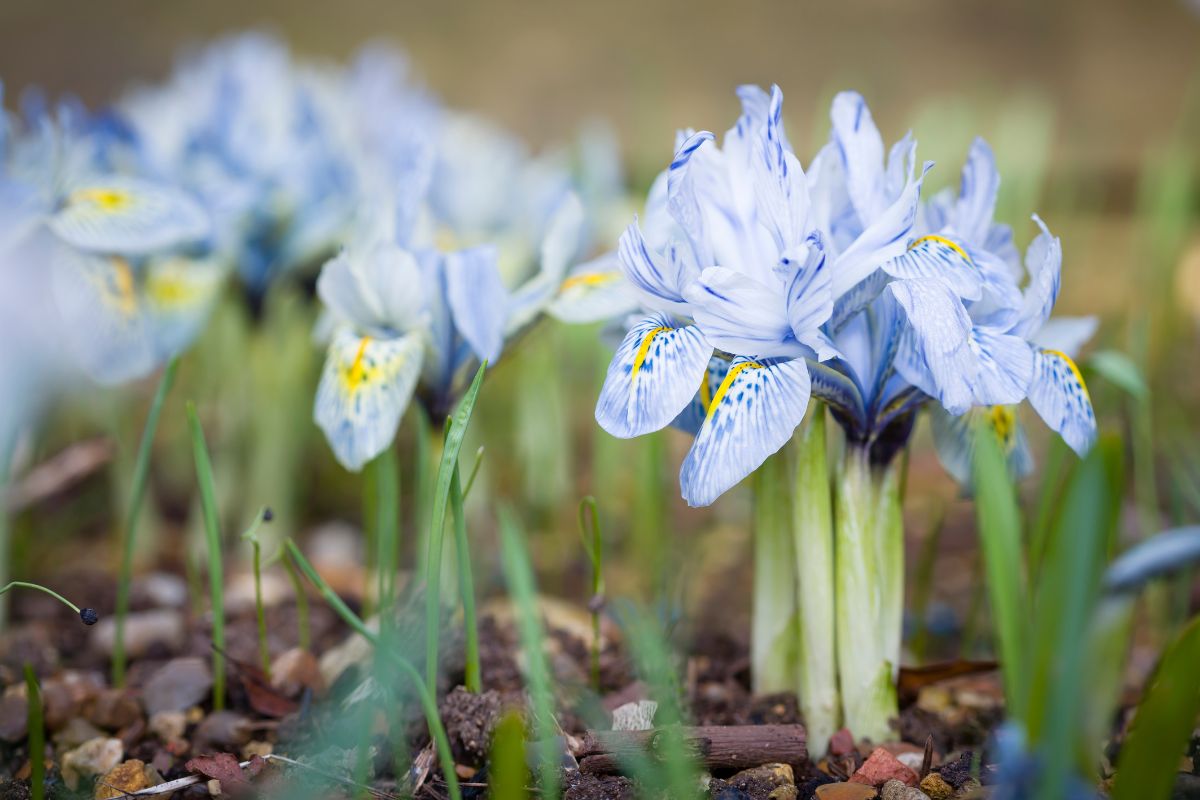
There are more than 300 species in the Iris genus. Among them, Bearded Iris grow from rhizomes and include many cultivated varieties of the species Iris germanica (which, according to some, may be a natural hybrid of two other species). Not all Iris have beards, nor are they all rhizomatous. Iris reticulata (pictured above) is an example of a species that grows from bulbs.

Orris root, derived from the dried rhizomes of certain Bearded Iris species, acts as a fixative (equalizer of vapor pressure) in potpourri and perfume. The scent differs from Iris flowers and is said to resemble that of Violets.

There are more than 30,000 cultivars of Tall Bearded Iris, one of the most popular groups of Bearded Iris. According to the American Iris Society, Tall Bearded Iris are defined as having stalks with a height of 27½” and above.
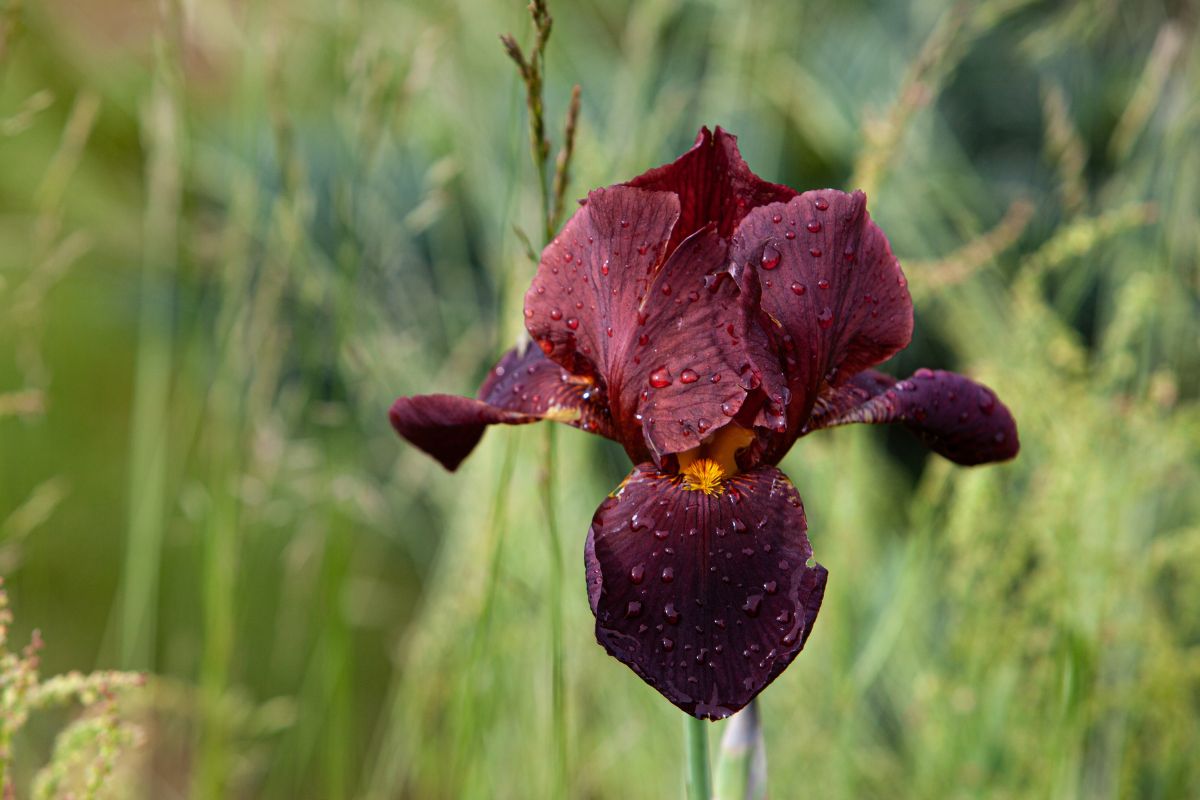
Although the number of colors represented by Iris is impressively large, there is still no truly red variety (i.e., the hue of fire engines and stop signs). The nearest they come today is brick red, maroon, or burgundy. This is because most Iris contain anthocyanin, a pigment responsible for purple colors.
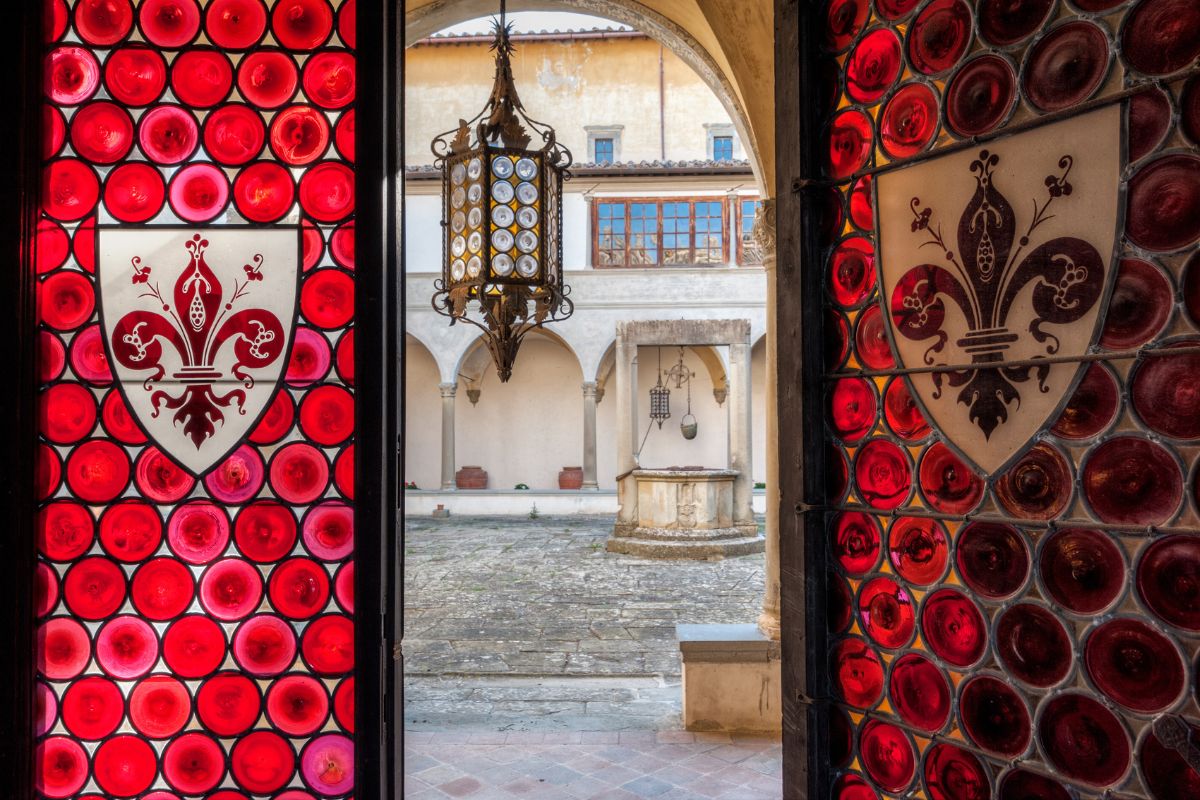
The fleur-de-lis, a stylized Iris, has been a symbol of France since the 12th century. It is also a symbol of Florence, Italy. In Florence, the white fleur-de-lis on a red background was reversed to signal the rise to power of the Medici family, adding momentum to the search for the still elusive red Iris.
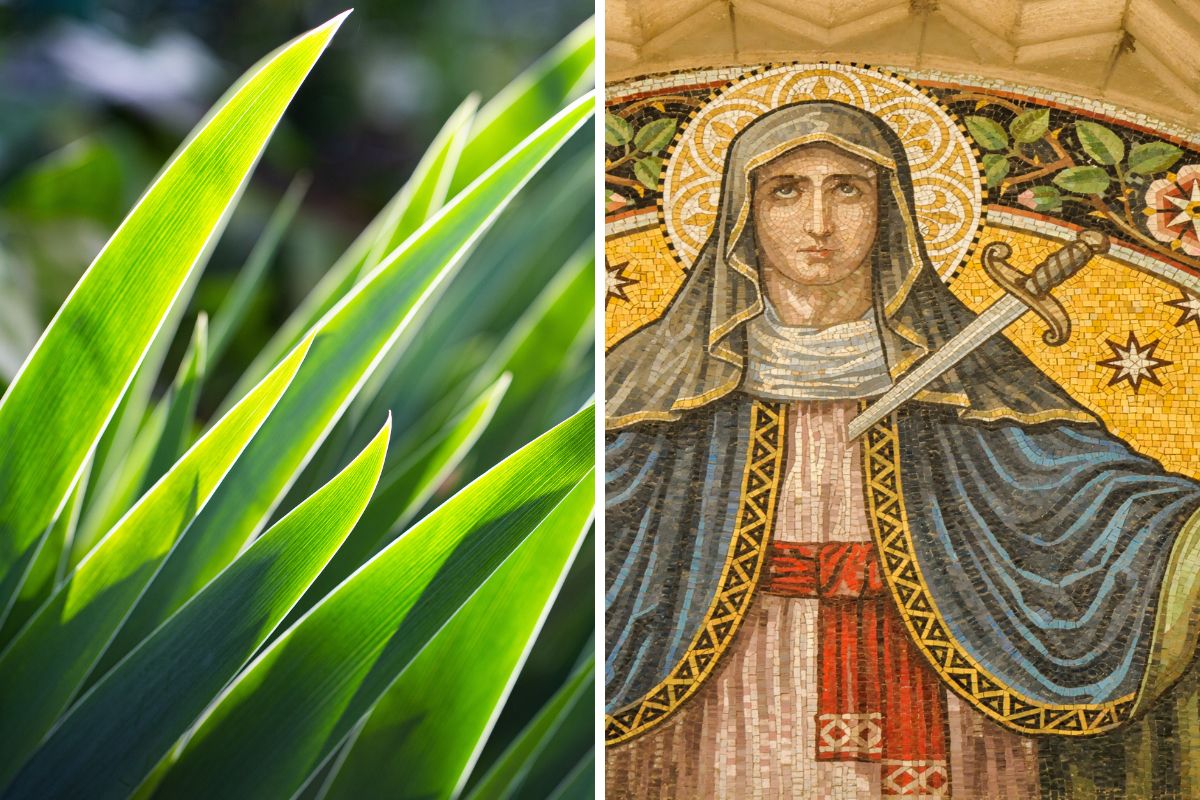
The Iris is widely viewed as a symbol of the Virgin Mary. This is due to the spear-shaped leaves of the plant, which resemble the swords that pierce Mary’s heart in Catholic imagery of Our Lady of Sorrows.
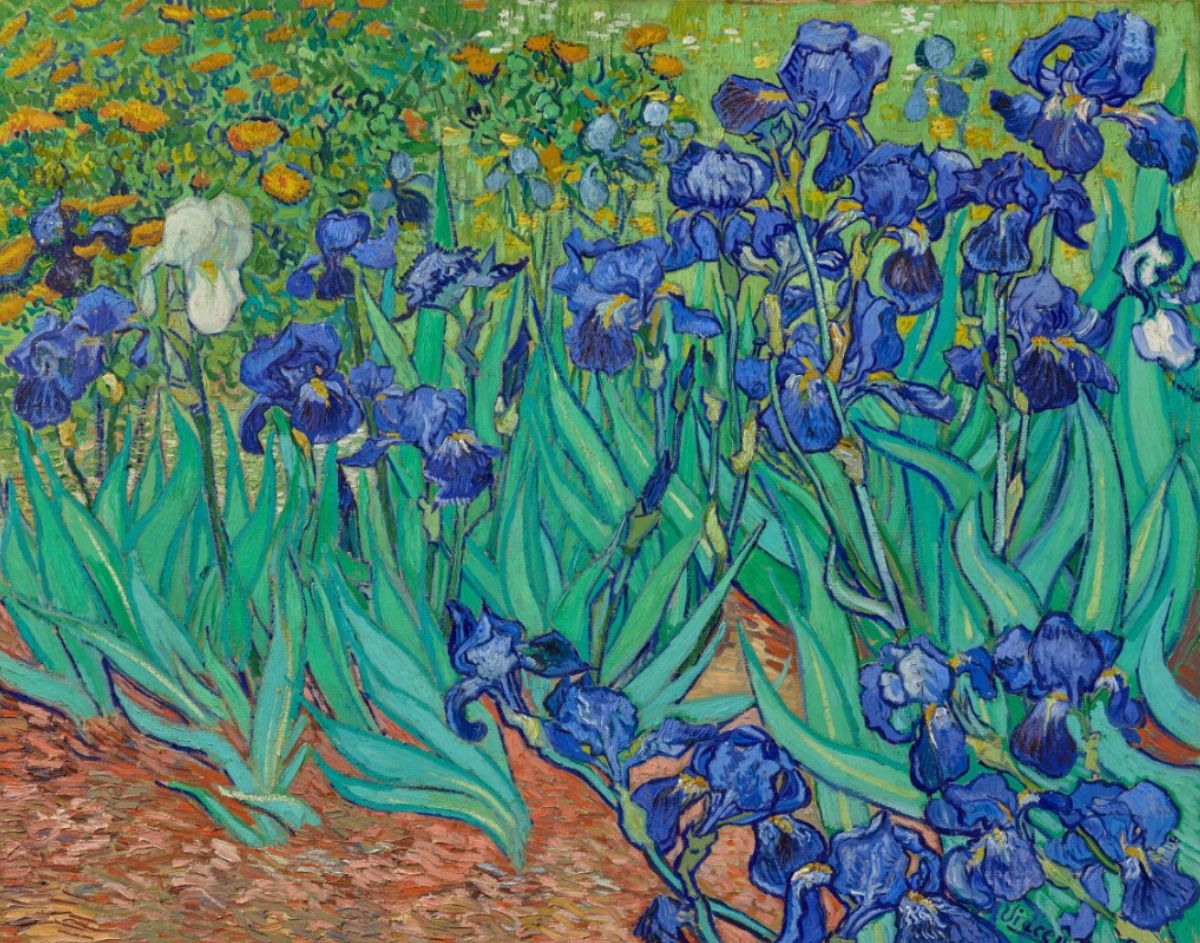
Vincent van Gogh painted Irises (1889) the year before his death at an asylum in France. The white Iris could be viewed as a representation of the artist’s loneliness, his unique style, or a fascination with idiosyncrasies in nature. Although Van Gogh viewed the painting as a study, it is considered one of his most renowned works.

